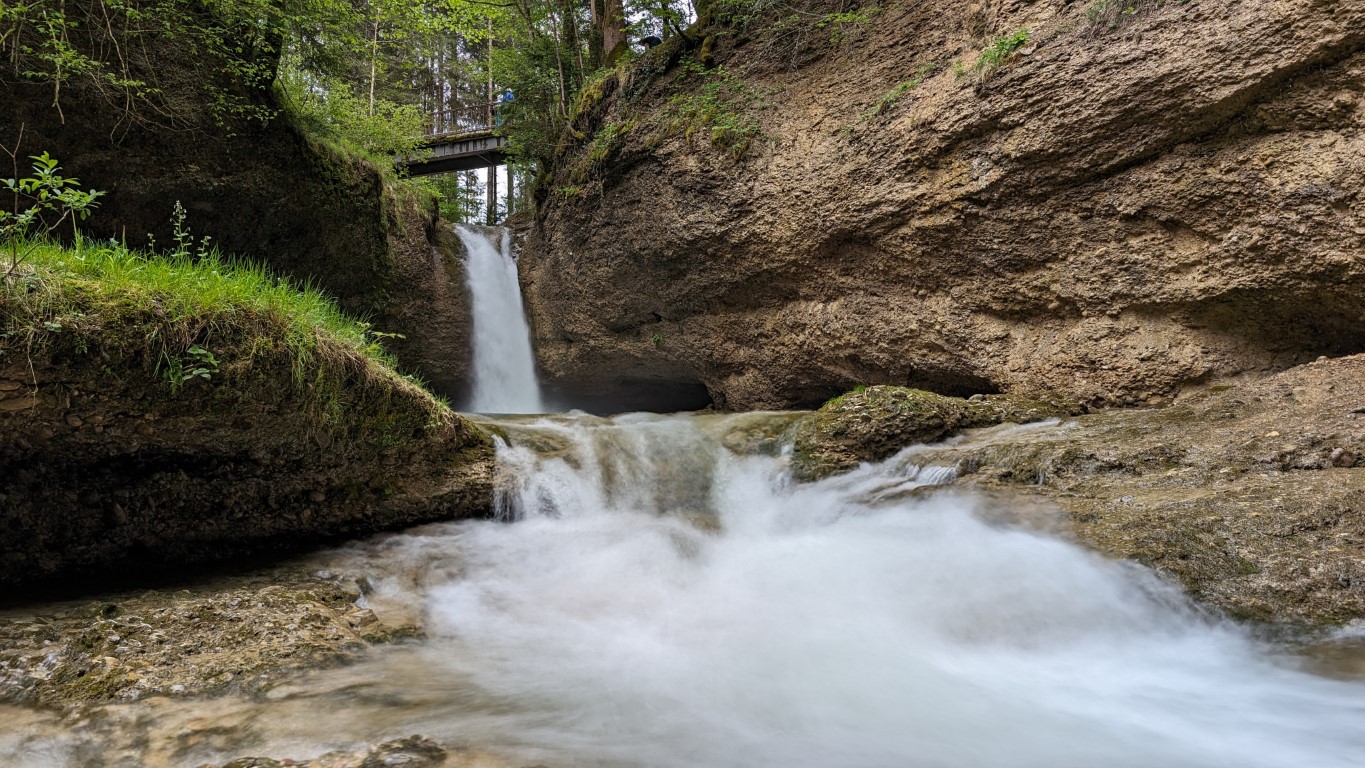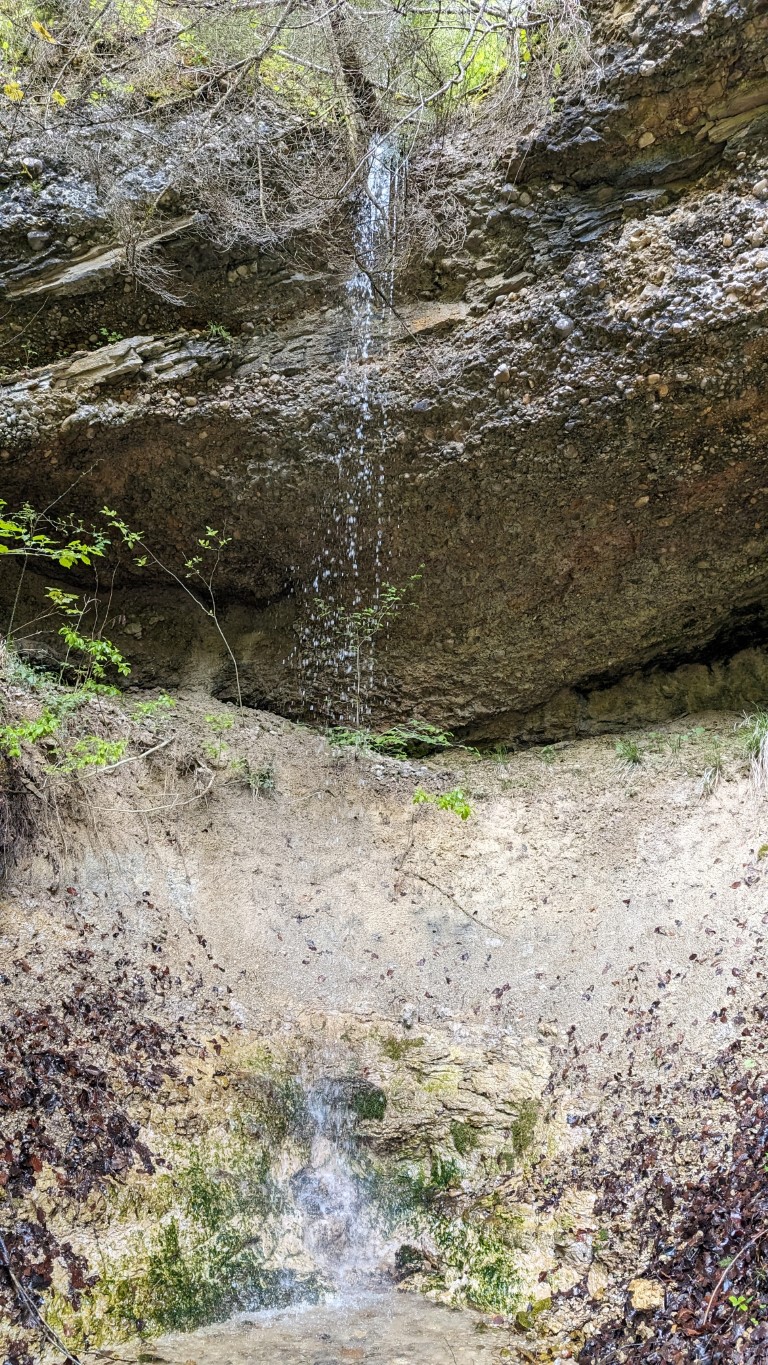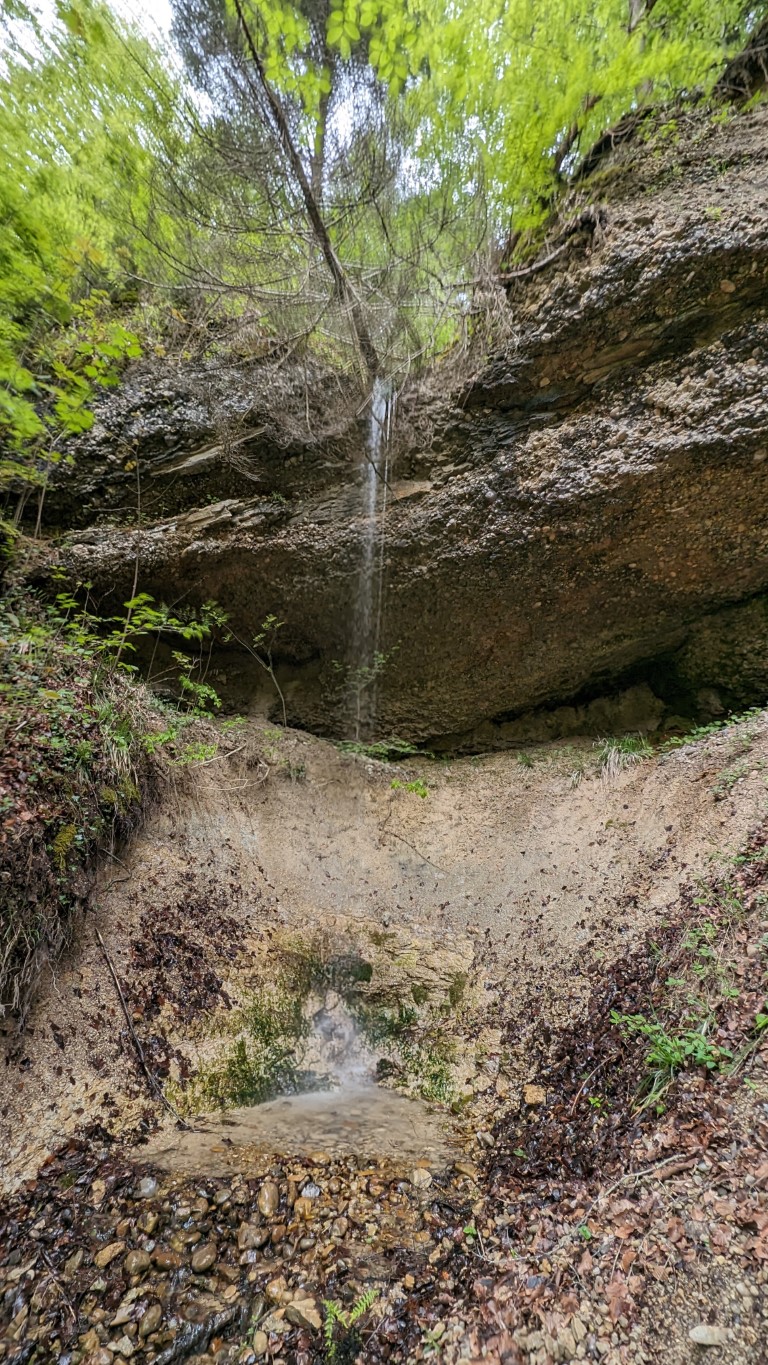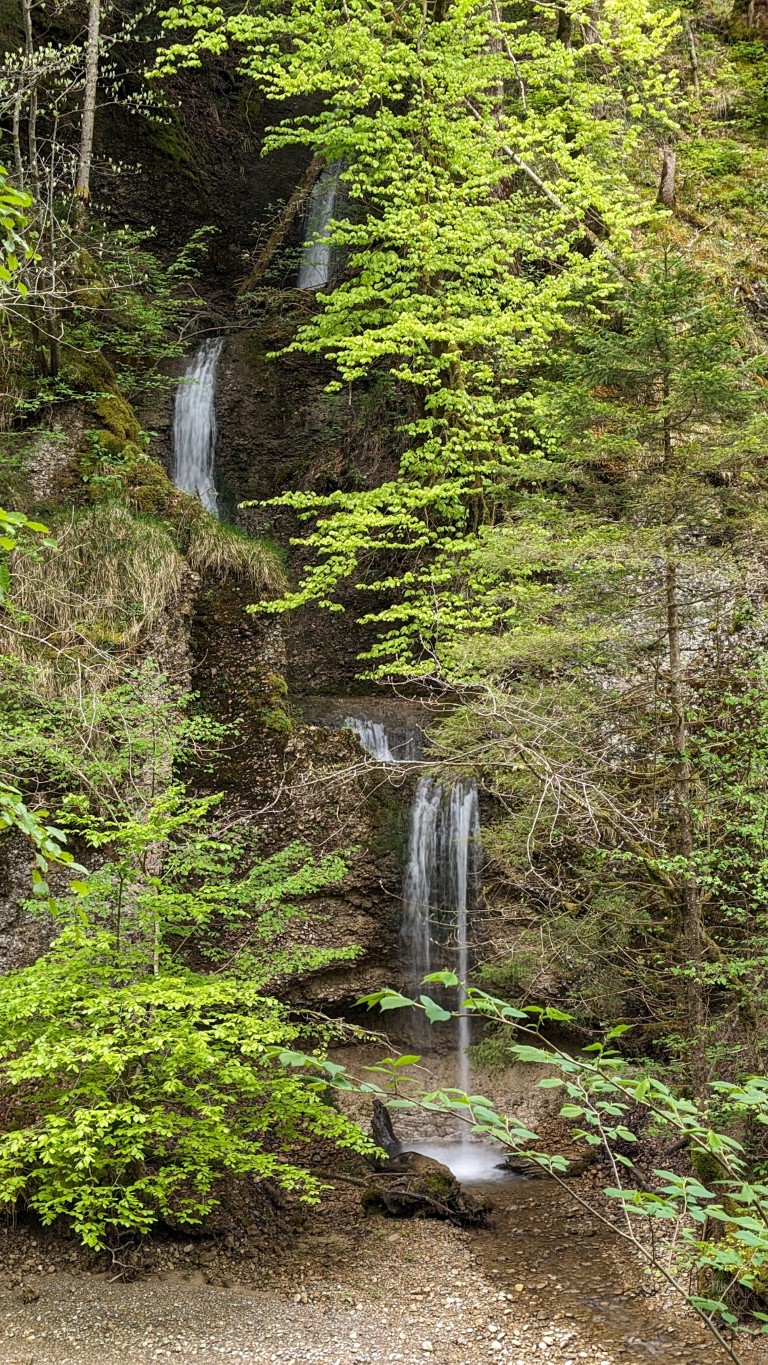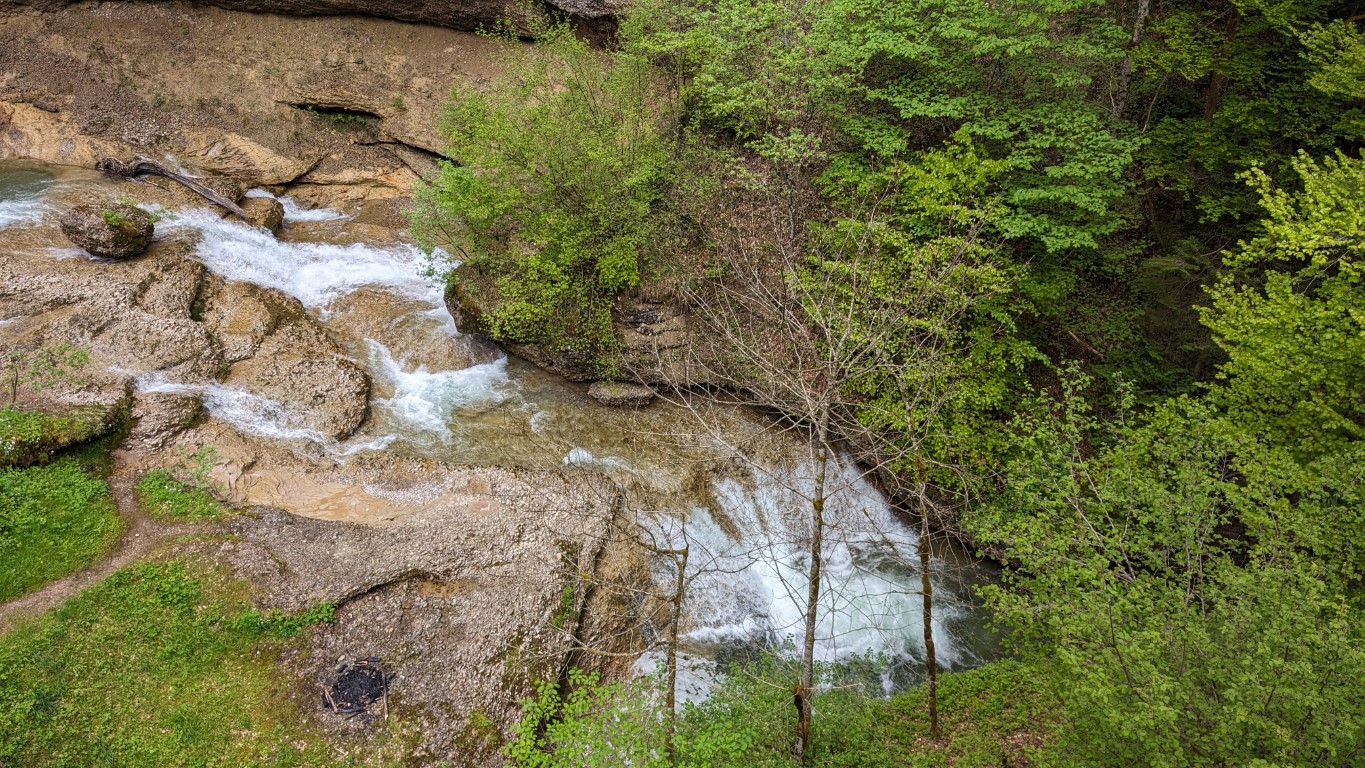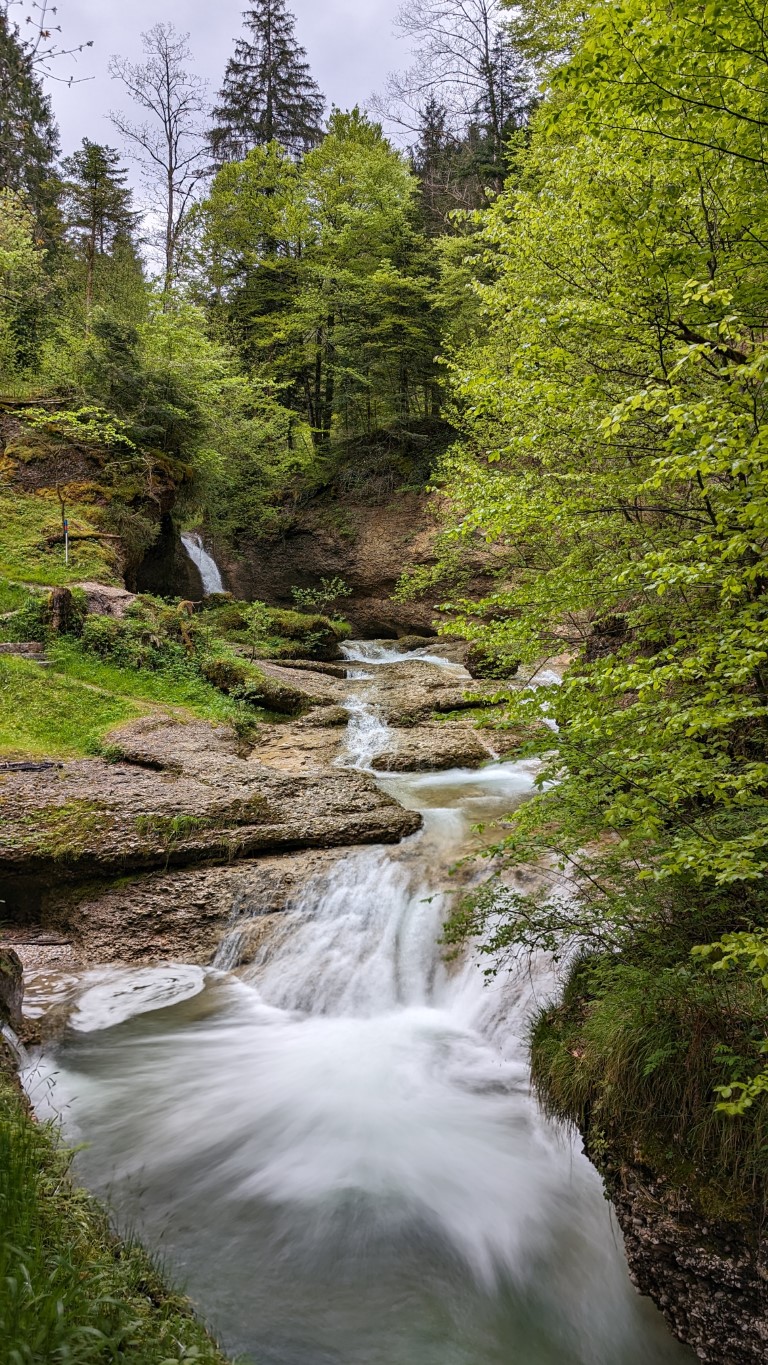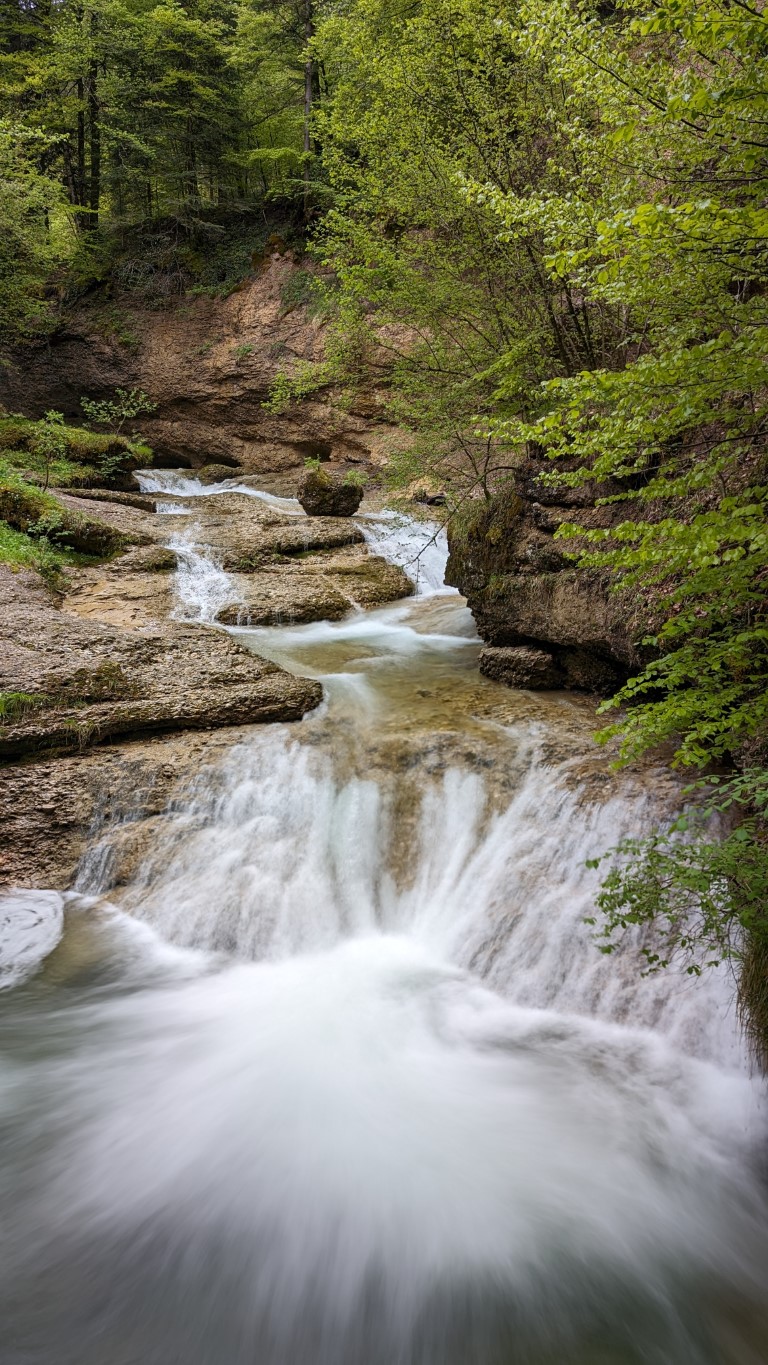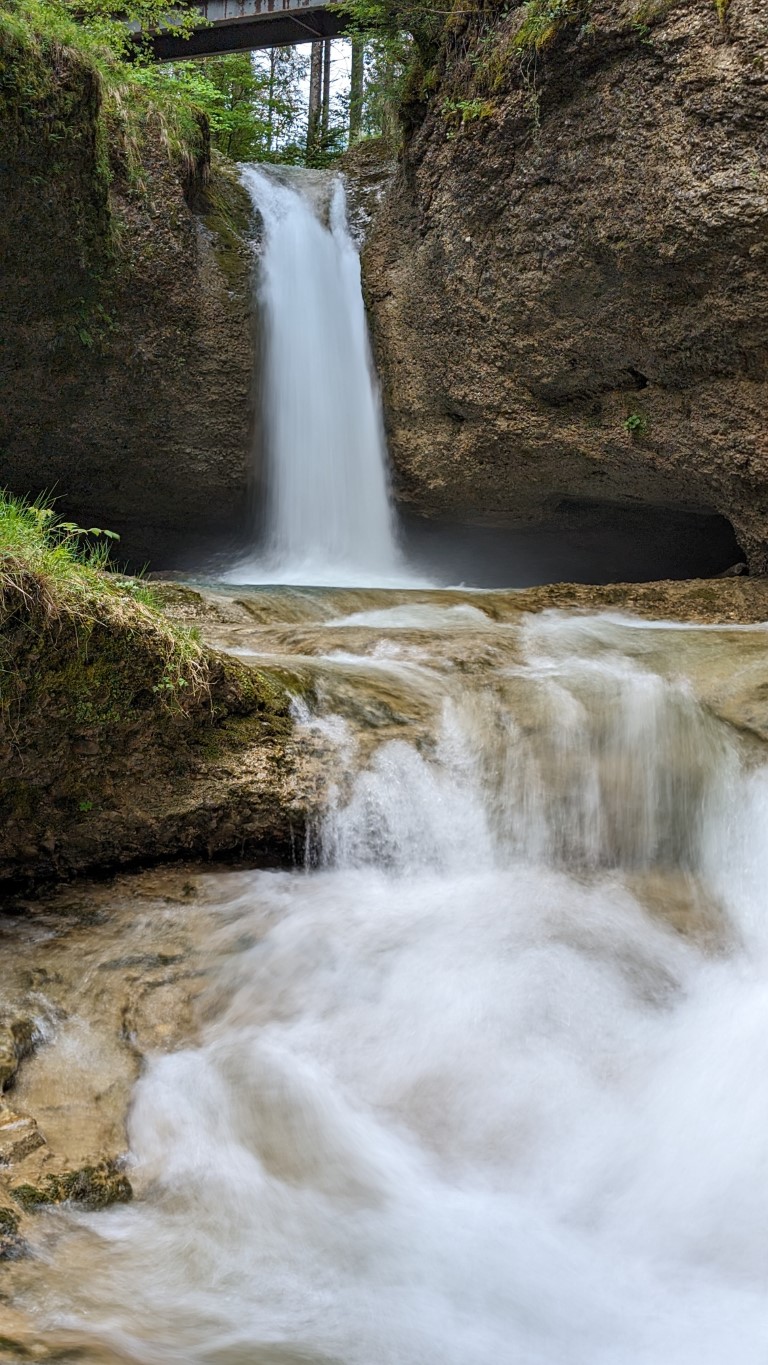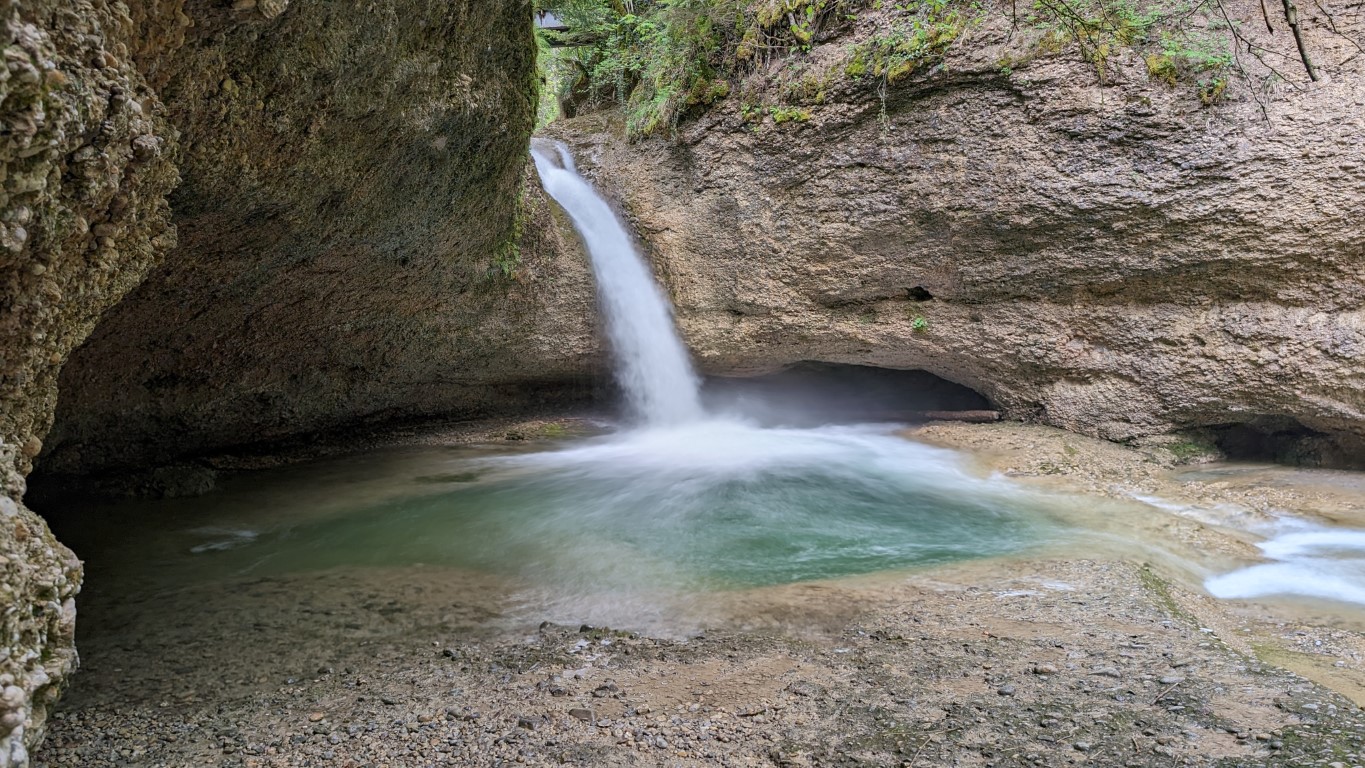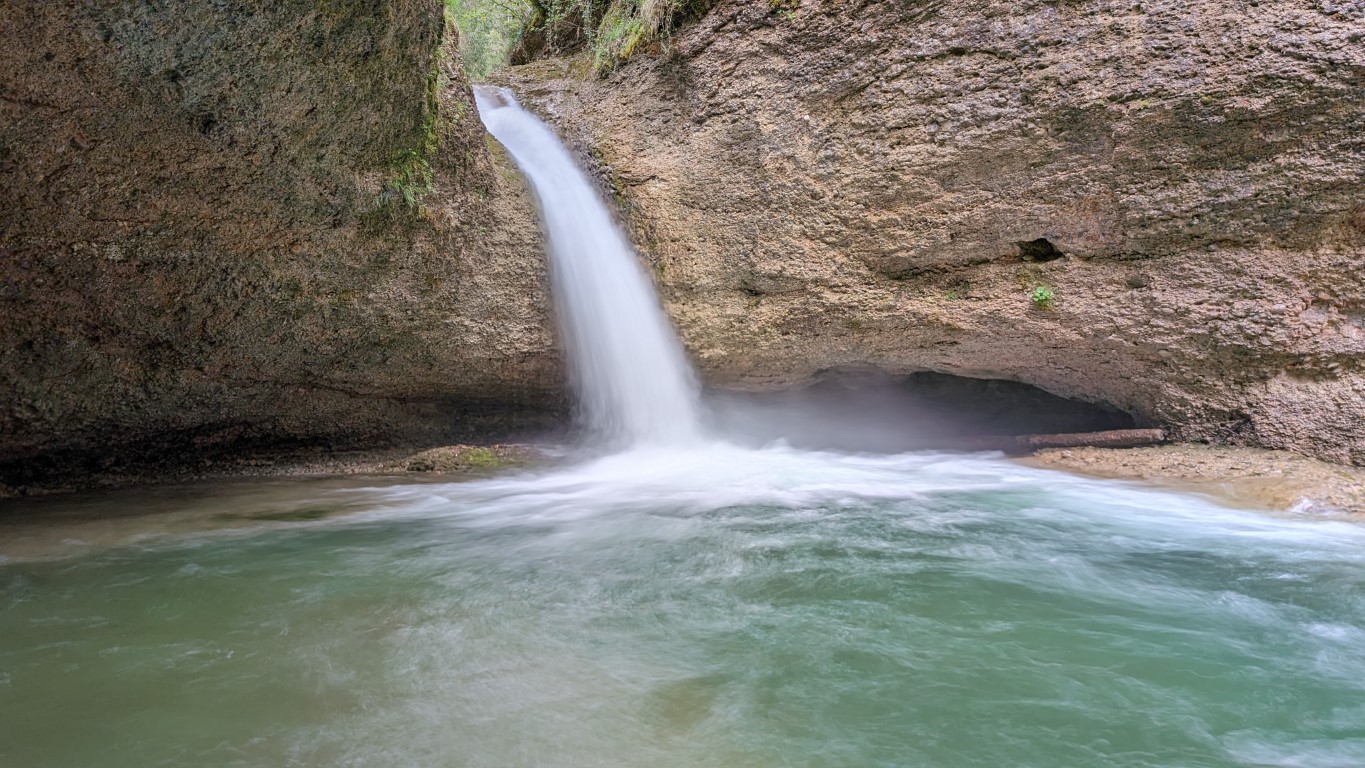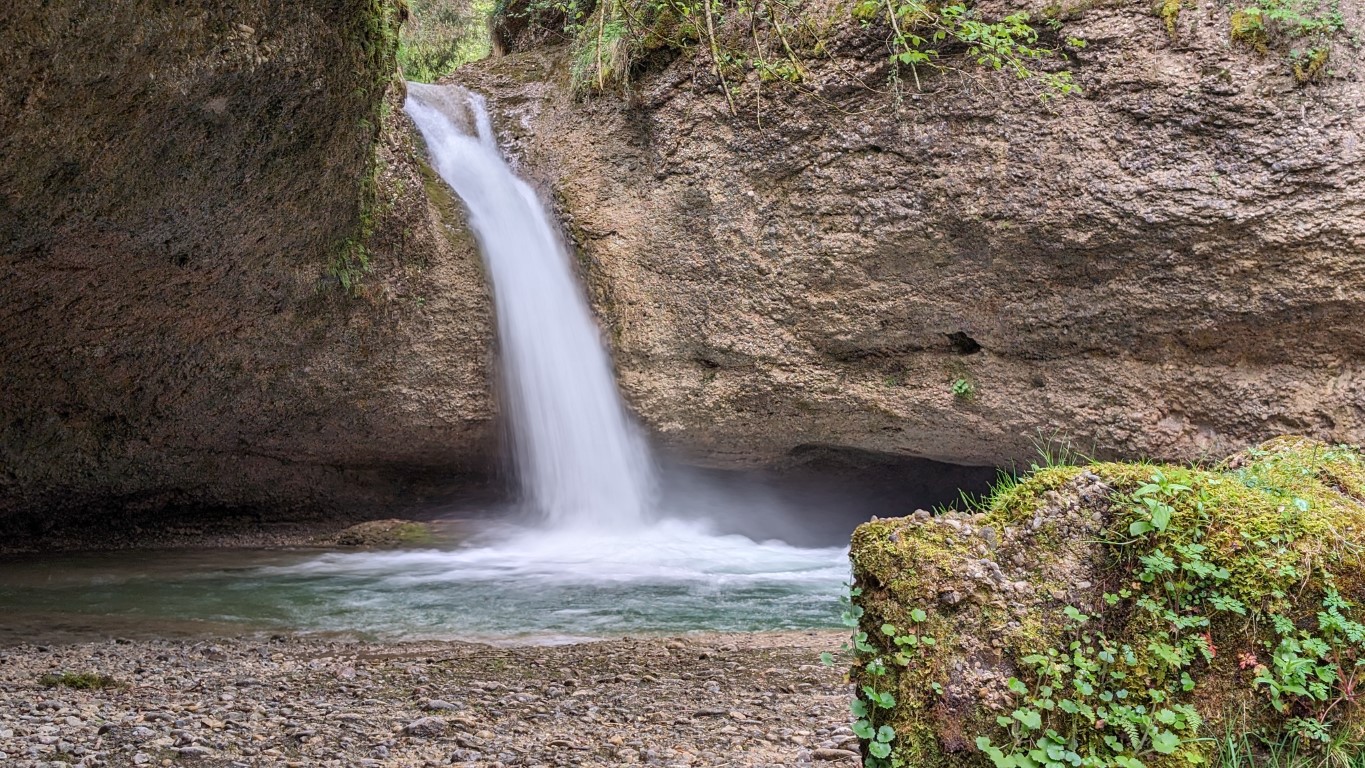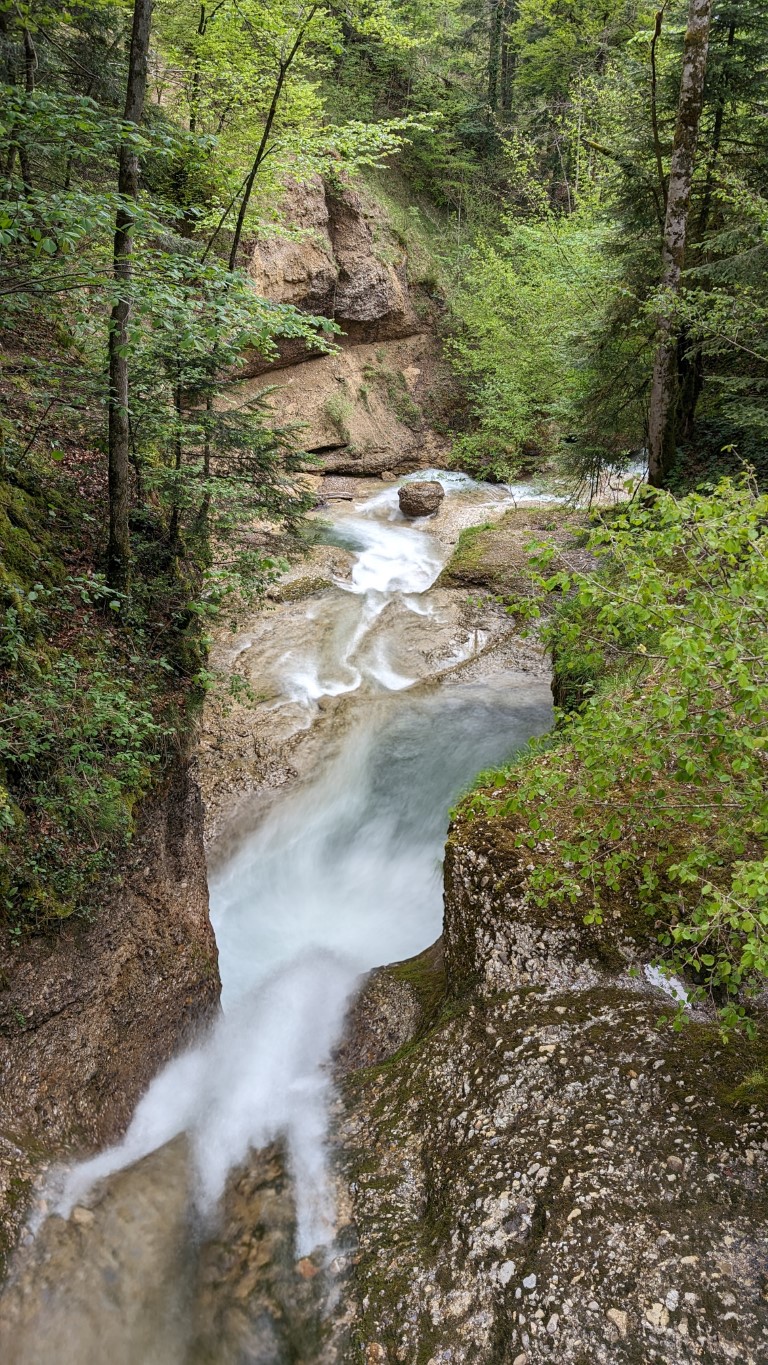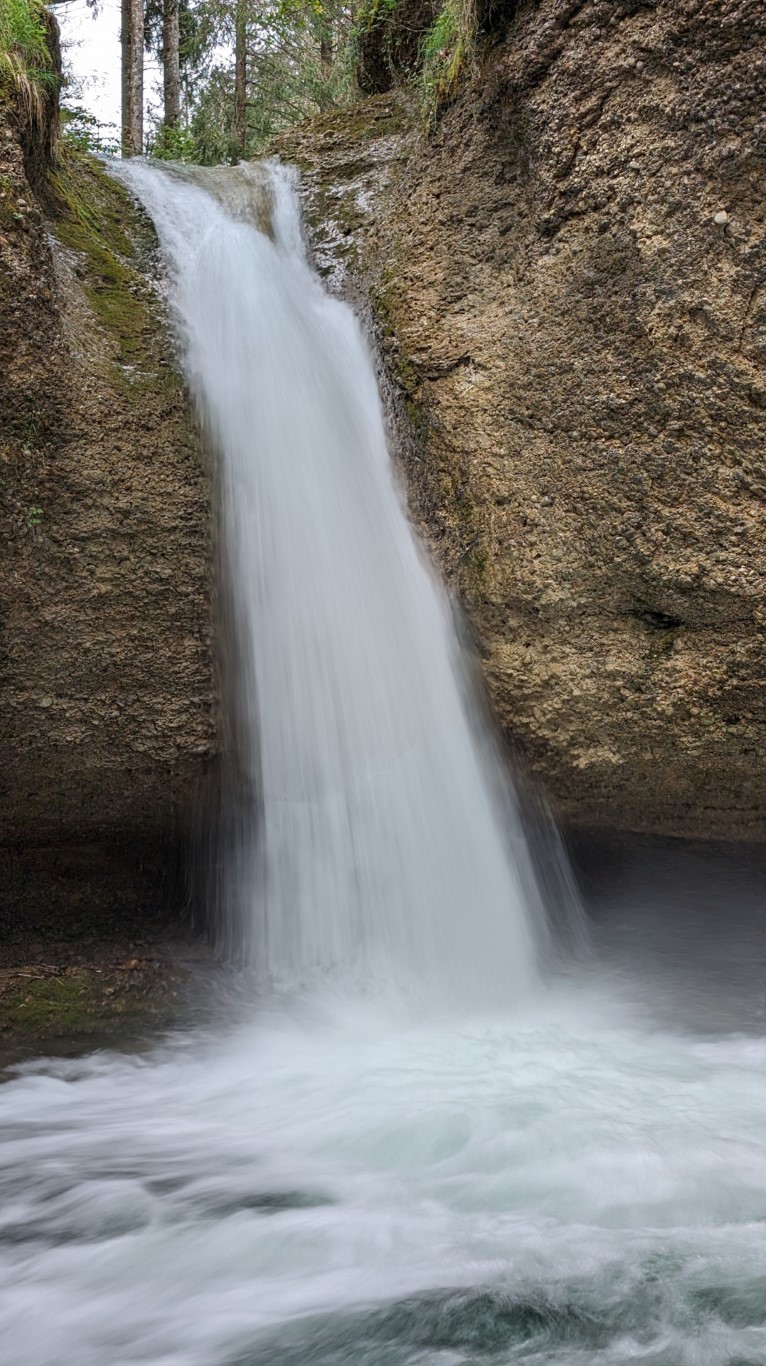In a hidden valley near Fischenthal, surrounded by dense forests and shrouded in mysterious mist, lies a waterfall of indescribable beauty and fairytale grace. Its appearance resembles a painting by the hand of a divine artist whose brushstrokes capture the magic of nature.
The water cascades down from a dizzying rock that rises majestically above the valley. The masses of water glide over the smooth rock like liquid silk, surrounded by a veil of fine spray that glitters like sparkling diamonds in the light of the morning sun. A gentle murmur fills the air, accompanied by a melodic rush that seems to caress the soul.
On the banks of the waterfall, delicate flowers dance in a riot of purple, azure and gold, while the moss beneath the roots of the old trees glows a rich green. There is an air of magic and mystery about everything, as if nature itself were singing a song of eternity that only those who are ready to be enchanted by its beauty can hear.
When the full moon pours its silver light over the valley, the waterfall really comes to life. The masses of water shine like liquid silver in the moonlight, while mysterious shadows hide in the darkness of the night. It is as if the waterfall reveals its hidden soul in these magical hours and takes the viewer to a world beyond all dreams. A place of silence and peace, where time seems to stand still and the boundaries between reality and fantasy blur.
The plague bird
In those dark days when the plague was wreaking its terrible havoc, a name awoke in the lands of Fischenthal, a name that was shrouded in tragedy and hope in equal measure - Besten. Legend has it that the hamlet got its name in the midst of the terrible plague period, when a mysterious bird alighted in front of one of the houses and, with an eerie song, blared the words "Plague! Plague! Plague!" into the disturbed air. The residents listened in shock and heard the feathered messenger's grim messages. His call became ever more shrill and threatening, and that same dark night the black plague claimed its first victim. The disease spread like wildfire through the unsuspecting settlement, and by the next day twenty people had already been swept away by the cruel plague.
In the days that followed, as the plague spread inexorably through the valley and the town itself was no longer spared, fear gripped the hearts of all residents. But one morning, as the sun timidly rose over the hills, the mysterious bird appeared again in front of the same house. But this time it did not sing a lament of despair, but a song of hope and consolation. With listening hearts, the people heard the bird's words: "Binz and Bänz and Boldrioo, hang around your neck, then you'll be gone!" It was as if the winged messenger had sent them advice on how to defy the disease. And so the residents began to eagerly collect herbs. Fortunately, "Binz", the rush grass, as well as "Bänz", the digestive herb, and "Boldrioo", the calming valerian, grew in abundance in the Brüttenertal. People collected the precious plants in abundance and brought them to the inhabitants of the valley at the front. And lo and behold: everyone who wore a sprig of the healing herbs around their neck felt strengthened and resistant to the dark forces of the plague. A breath of relief passed through the minds of the people, and those who carried the herbs from then on were affectionately known as the "plague people". Since that day, the hamlet that was once under the spell of the plague has borne the name Besten - a place that embodies hope in the midst of darkness.
Access
From Steg, drive towards the ski lift and then continue until you reach the no-vehicle sign. Then it's another 15 minutes' walk.


